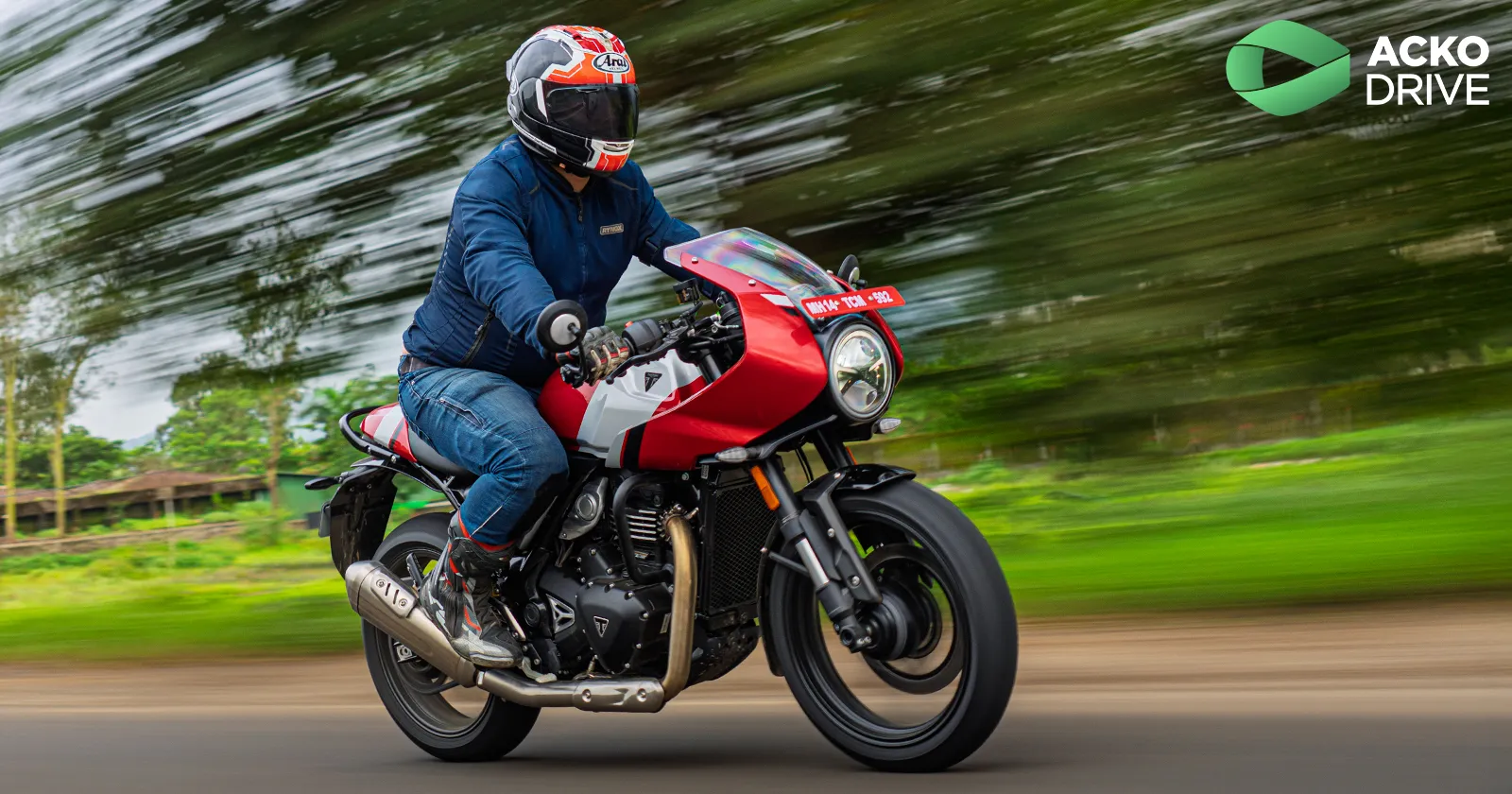
Triumph’s smallest cafe racer comes with a lot of expectations. Does it deliver on an authentic experience?

Share Post

Triumph’s smallest cafe racer comes with a lot of expectations. Does it deliver on an authentic experience?
There was always bound to be a Thruxton on Triumph’s 400 cc platform, right? It was hinted at during the product presentation in 2023 and a Triumph Modern Classic lineup without a cafe racer doesn’t seem quite right. But the bike that has spawned doesn’t look quite as classical. So, is the Thruxton 400 worthy of carrying forward the Thruxton badge of honour?
Triumph claims that the design is an evolution of the classical styling from the Thruxton R’s Clubmans half fairing. But I feel the new one is missing the mark. The more old-school look was a lot more evocative, a lot more engaging, a lot more soulful, and characterful. Whereas the small Thruxton, even though it is aiming for the youthful buyer, it doesn't strike that same chord in your heart. It doesn't feel quite as special as the Thruxton R.
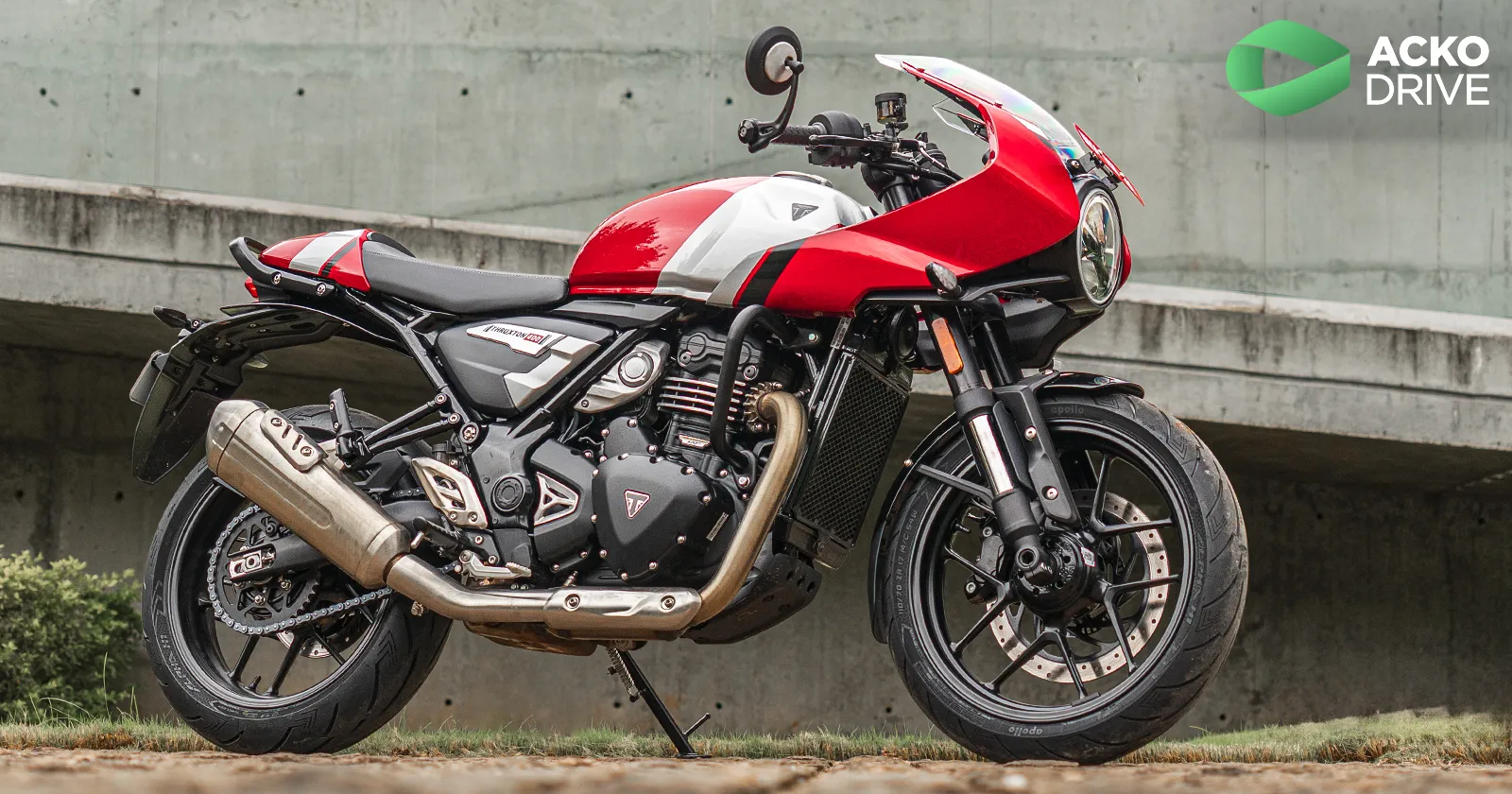
Here’s a quick recap of changes from the Speed 400 to the Thruxton 400:
Does the Thruxton 400 actually feel sportier than the Speed 400? Maybe. For starters, the 2 extra bhp that have been provided are only to be experienced extremely higher up in the rev range. Hence, if you are going full gung-ho, the speediness is felt. The claim is that it is a second quicker from standstill to 100 kmph than the Speed 400. But from the saddle, it doesn’t feel as much.
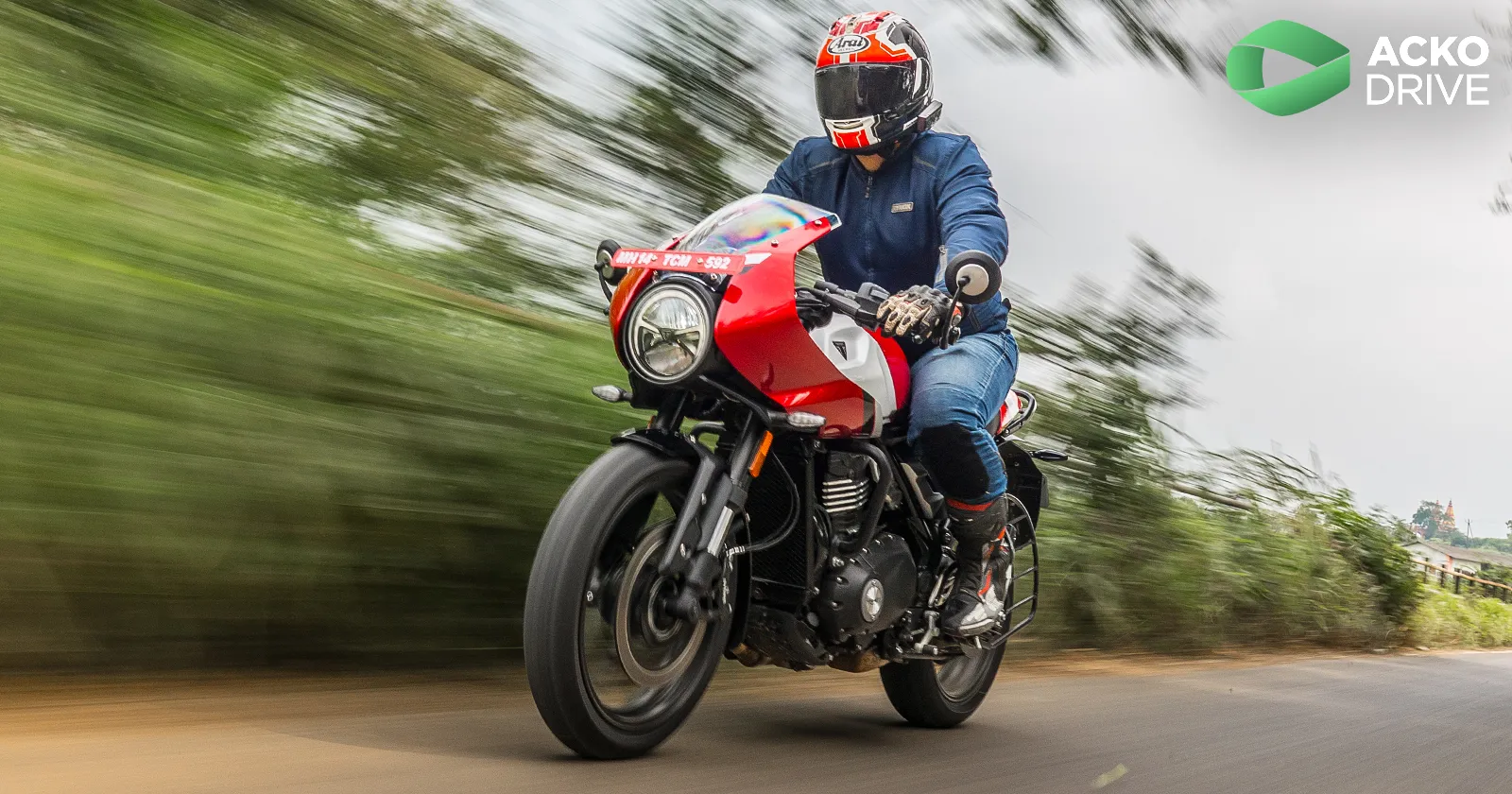
The Thruxton doesn’t feel quite as zippy or eager when you set off. Peak torque kicks in quite a lot later and even across the rev range, the driving force is lower. Hence, while it is tractable enough, you will have to contemplate between a gentle pull away or two downshifts to get back up to speed.
100 kmph in sixth gear is where the Thruxton feels the sweetest and that is again a downer. Given the more performance at hand, you could have expected the bike to sit at higher speeds more effortlessly but that is not the case. In fact, the buzziness levels have not been addressed at all. 5500-6000 rpm is where the vibes become apparent but not harsh. And as the revs build up, they become all the more prominent and taxing. These vibes are felt highly at the pegs initially and then at the bars.
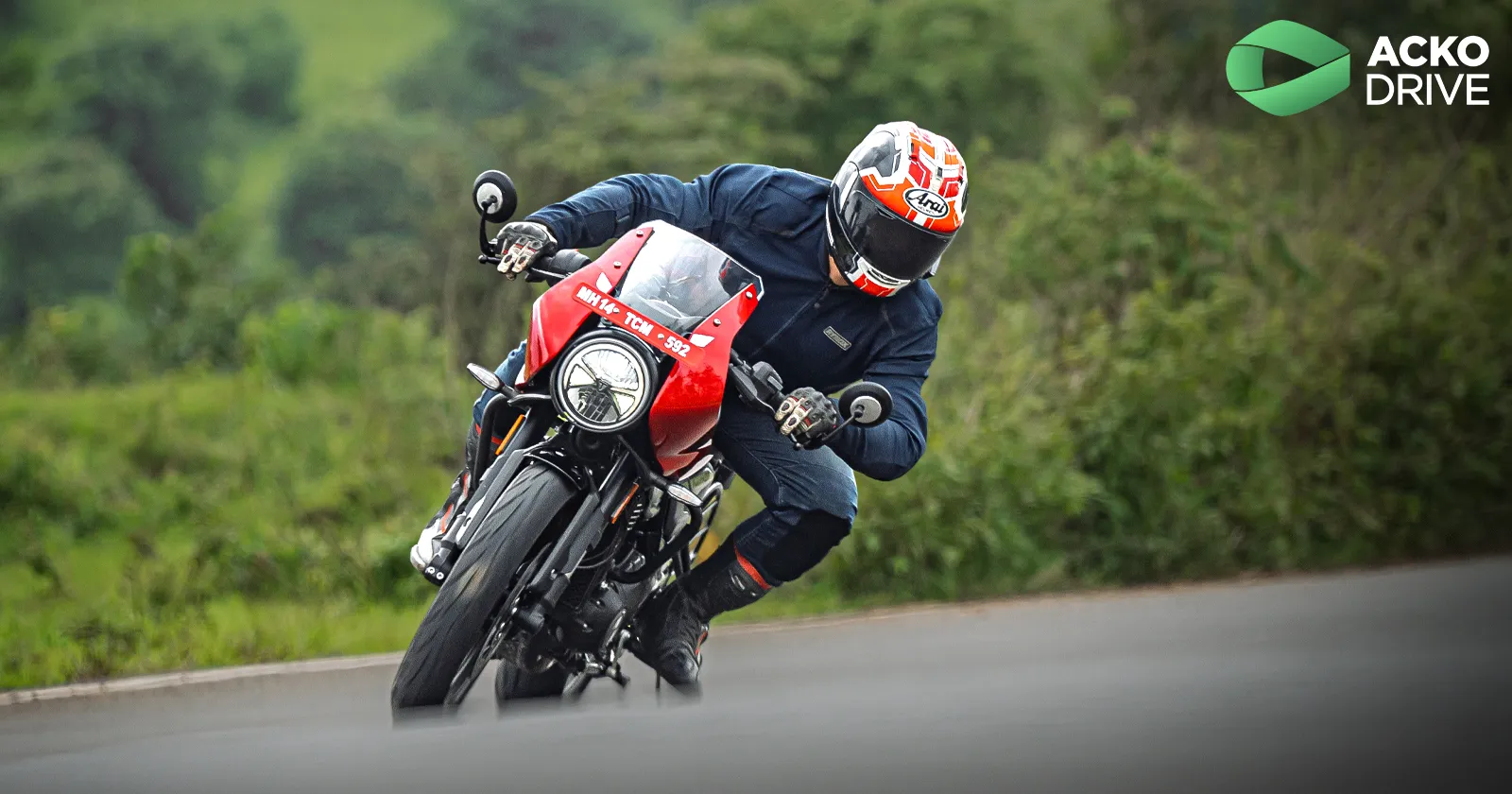
Hence, performance-wise, the Thruxton doesn’t feel as spirited as we would have hoped for. And perhaps the fix isn’t quite as complicated either. If Triumph was to switch the rear sprocket back to the larger one from the Speed 400, then it would bring about some speediness and feel. If you are considering buying the Thruxton, fiddling around with the sprockets would be something I would suggest you do.
The riding posture on the cafe racer is not quite as aggressive or committed but again it too doesn’t make you feel quite well connected with the bike. Let me elaborate.
The 795 mm seat height is a little lower than the Speed 400, which makes flat footing not a pain for shorter riders. However, the side panels are wider, which forces the rider to further sprawl their legs apart. This won’t be a major issue but something that you will have to get used to.

The more apparent discomfort for me was getting to latch on to the bike. Because there is a small panel between the tank and the side panel, done for aesthetic purposes to make the bike look complete, and these three panels have different surfaces contours, locking my knees was getting tedious. The tank in the first place is quite narrow and the footpegs are higher. Thus, finding the right locking position with my knees was becoming difficult. Ultimately, I had to grab on to the bike using my calves to hold on to the side panels.
Weight management is well done. At 183 kilos, the Thruxton 400 is just 4 kg heavier than the Speed 400 and that is primarily down to the fairing. It is definitely one of the lightest cafe racers that are present in the market, as the Royal Enfield Continental GT 650 weighs in excess of 200 kilos and has a more committed stance.
A cafe racer should be better in the twisties than a sporty roadster and the same holds true for the Thruxton 400. There is a lot more feel from the front end that makes it quite a quick steering motorcycle. It might just feel a tad bit over sharp or more reactive at the start, but once you get the hang of the quickness, you will enjoy it thoroughly. And it is not coming at the cost of stability. It feels quite as planted and stable. Mid-corner bumps are dealt with in a neat manner without majorly upsetting the motorcycle.
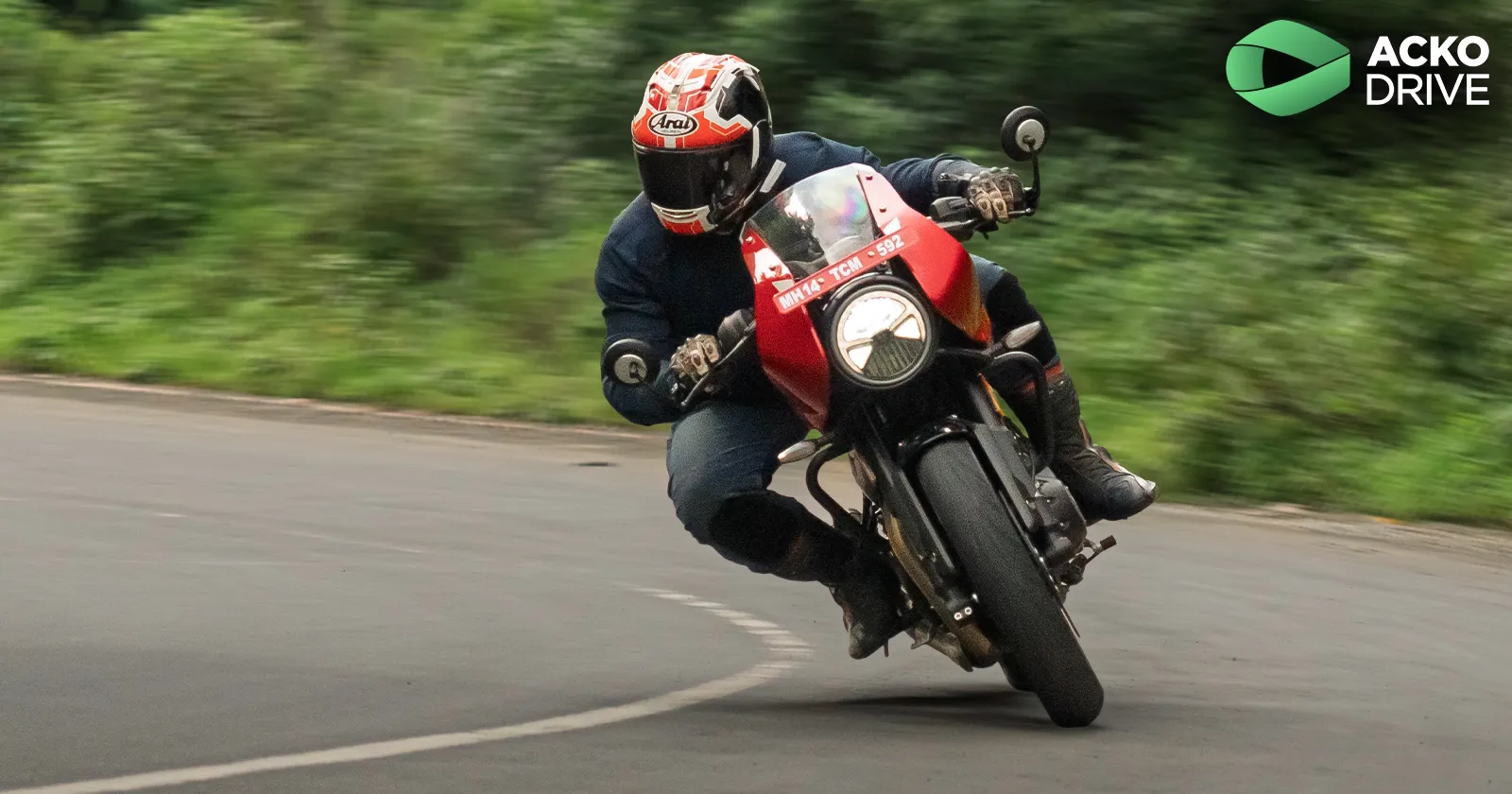
What continues to impress us about the Thruxton like it did with the Speed is the ride quality. The India-spec bikes have a slightly more pliant setup to handle our road conditions, and Bajaj engineers have to be credited for the same. The Speed 400 might still have the best tune but this cafe racer comes very close to it. It soaks in the bumps rather well. There are no thuds experienced and it doesn’t get frazzled when tackling the road imperfections. I would like to fiddle around with the preload setting for the monoshock to make it less reactive for my 100 kg frame. Currently, it is set to the lowest setting and not the middle like the Speed 400.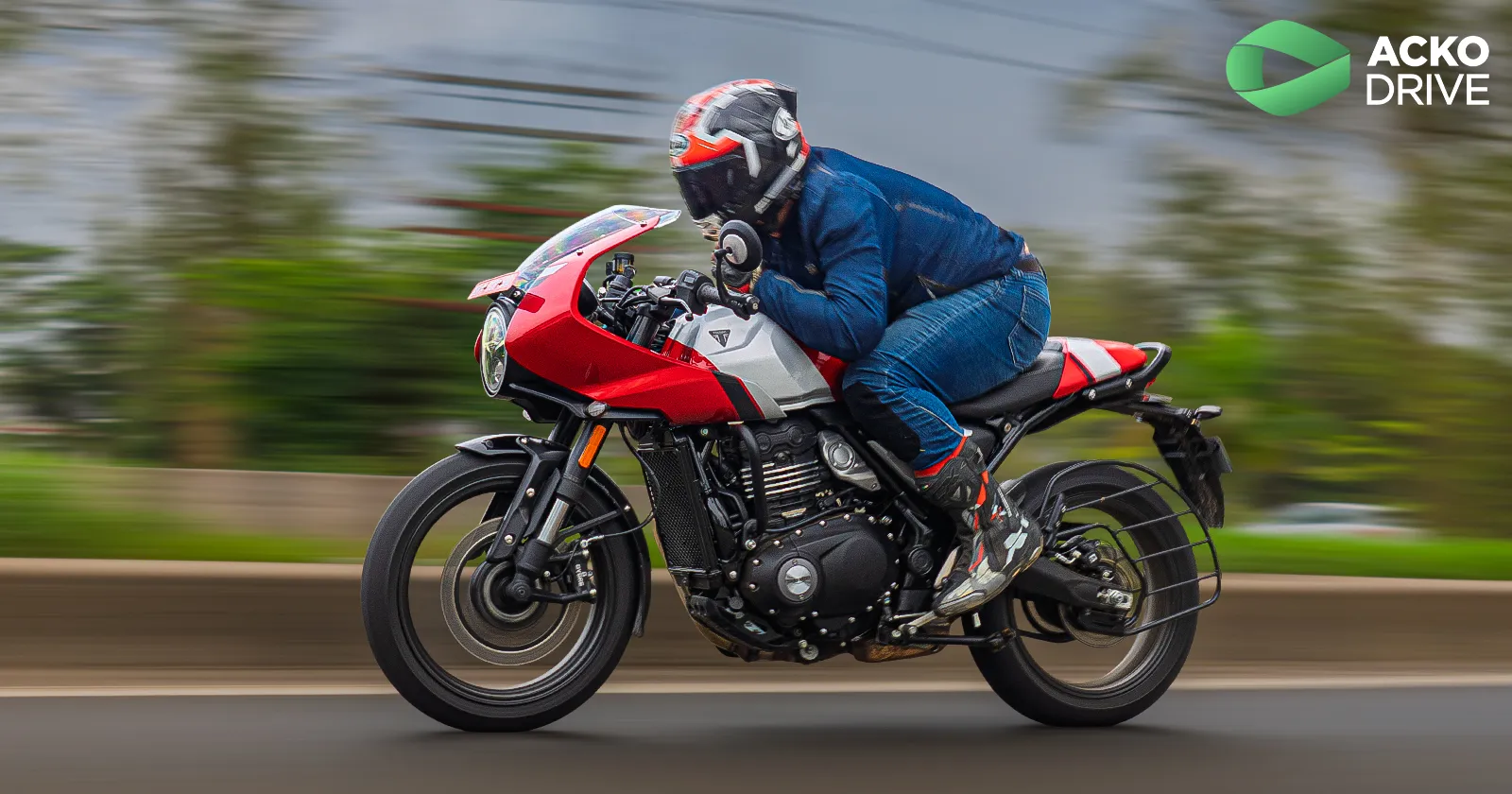
There is no skimping on the braking hardware or tyres on the Thruxton. Sintered brake pads are available as standard. Yay! The master cylinder positioning and brake reservoir have been redesigned to accommodate the cafe racer fairing. And lastly, Bajaj has moved to Apollo tyres as the primary tyre supplier for most of its road-focused 400 cc bikes, like the Speed 400, the KTM 390 Duke and the Pulsar NS400Z. Hence, the same grippy Alpha H1s are found here as well. No complaints whatsoever. Overall, the handling package and ride quality of this bike really shine through.
Justifying the Thruxton badge? No. Thruxtons have been very characterful, evocative and special Triumph machines. This small one is a good cafe racer. In fact, a more apt name for it would be the Speed 400 RR, following the similar design cues of the Speed Triple 1200 RR.
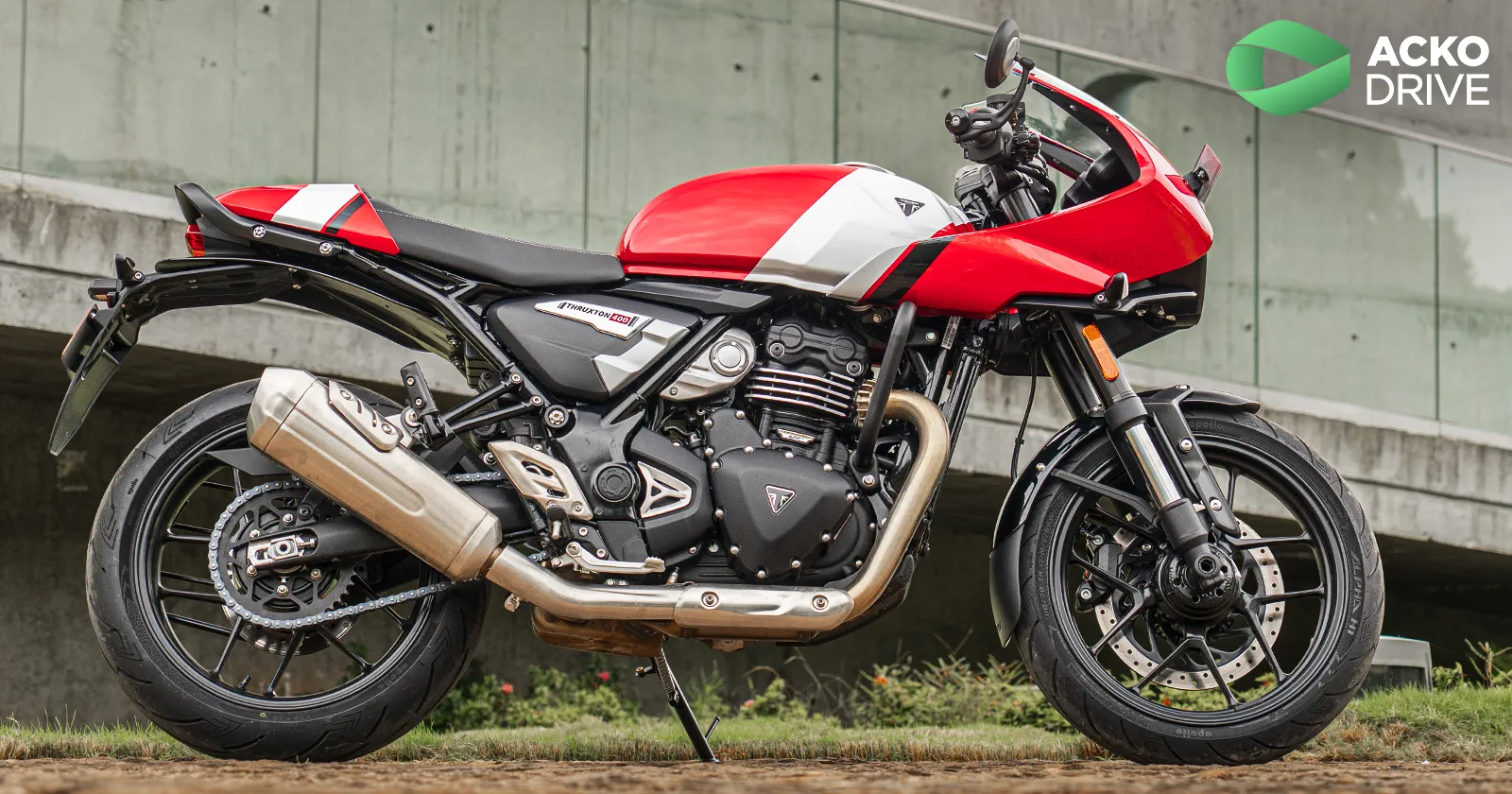
You won't feel as cumbersome when you're riding it in the city. It has the legs to sit on the highway at 100 kmph, provided you are going to be okay with riding it in a slightly committed riding posture. But the engine troubles, mainly the vibrations, are present here as well. And it isn’t like there is a lot more performance to be had. The suspension and the handling department shine through. But enough to call it a Thruxton. Not quite.
Tata Harrier, Safari Petrol Review: Less Noise, More Refined, Thirsty Too!
Arun Prakash 22 Dec, 2025, 5:47 AM IST
Maruti Suzuki e Vitara Review: Practical Electric SUV for India?
Arun Prakash 18 Dec, 2025, 4:11 PM IST
MINI Convertible Review: Cooper Goes Topless
Arun Prakash 13 Dec, 2025, 12:05 PM IST
Harley-Davidson X440 T First Ride Review - Redemption Or Not?
Arun Mohan Nadar 13 Dec, 2025, 12:00 PM IST
Maruti Suzuki e-Vitara Review: Global EV Built in India With 500km Range Targets Creta Electric, BE 6
Siddharth Vinayak Patankar 18 Nov, 2025, 8:07 AM IST
Looking for a new car?
We promise the best car deals and earliest delivery!
